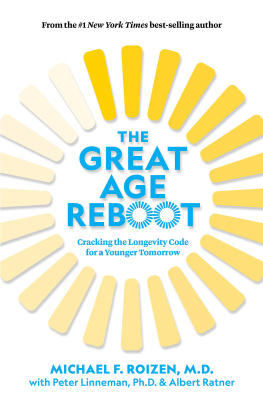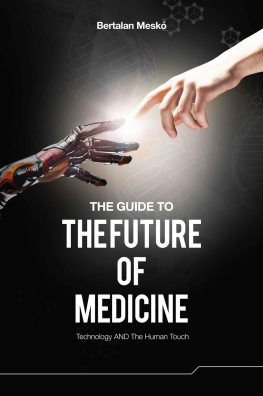Originally published in 2000 by McGraw-Hill
Published 2004 by Transaction Publishers
Published 2017 by Routledge
2 Park Square, Milton Park, Abingdon, Oxon OX14 4RN
711 Third Avenue, New York, NY 10017, USA
Routledge is an imprint of the Taylor & Francis Group, an informa business
Copyright 2004 by Taylor & Francis.
All rights reserved. No part of this book may be reprinted or reproduced or utilised in any form or by any electronic, mechanical, or other means, now known or hereafter invented, including photocopying and recording, or in any information storage or retrieval system, without permission in writing from the publishers.
Notice:
Product or corporate names may be trademarks or registered trademarks, and are used only for identification and explanation without intent to infringe.
Library of Congress Catalog Number: 2004041180
Library of Congress Cataloging-in-Publication Data
Zey, Michael G.
The future factor : forces transforming human destiny / Michael G. Zey.
p. cm.
Originally published: New York : McGraw-Hill, 2000.
Includes bibliographical references and index.
ISBN 0-7658-0591-X (pbk. : alk. paper)
1. Social prediction. 2. Technological forecasting. I. Title.
HN17.5.Z48 2004
303.49dc22 2004041180
ISBN 13: 978-0-7658-0591-1 (pbk)
To George, my father, and Aunt Kay, who brought me
wisdom, love, and joy
Despite its title, The Future Factor is as much a book about the present as it is about events to come. The ultimate goal of the book, to be sure, is to create a realistic depiction of future human development. To achieve such a goal, however, I was continually challenged to interpret a broad range of current economic, political, social, and scientific events within the broader framework of my long-term projections about the ultimate fate and destiny of the human species.
In this book I present a very optimistic, upbeat vision of the future of the human species. As I make clear, the human species is already well on its way to creating this pathway to a much better world. During periods of rapid societal progress, such as the late 1990s, it is not difficult to make a case for the interconnection between current affairs and a glorious future. However, during more troubling times, like those of recent years, questions arise about the validity of such rosy prognostications.
Since The Future Factor first appeared, our species has certainly experienced a sufficient amount of political and economic turmoil to enable critics to legitimately question any optimistic forecast of the future human condition. The economic slowdown of the first months of the third millennium burst the illusions of millions who expected to daytrade their way to wealth and happiness. Moreover, the upsurge in world terrorism has forced academics and media commentators to redraw their scenarios of a peaceful geopolitical future.
The good news is that even in times of troubling political and economic events, ample evidence continues to accumulate that our species is improving its general material situation and moving in the positive direction originally envisioned in this book. In fact, since the first appearance of The Future Factor, several developments and breakthroughs only stand to reinforce my optimism about humankinds future. In this introduction I will review some of the breakthroughs that are forming the foundation of the next big leap for the human species. Specifically, these include cold fusion energy development, broadband high-speed Internet connections, and what I label the Superlongevity Revolution, innovations that will enable us to produce more goods and services, live longer and healthier, and travel faster and farther.
Certainly, the events that have unfolded since the original publication of The Future Factor in 2000 are a cautionary reminder to sociologists and other prognosticators of the inherent serendipity of human events. From late 1996 to early 2000 a global economic boom was in full swing: many countries enjoyed extremely high growth rates in gross domestic product; the U.S. stock market, especially the technology-driven NASDAQ, ran up exponential gains; unemployment plummeted to levels not seen since the 1960s. In a state of near-euphoria learned economists and financial journalists, as well as members of the investing public, convinced themselves that we had finally conquered the business cyclepermanent prosperity had arrived. However, the unexpected occurred. In 2001, and again in 2002, the world economy slowed significantly. The high growth period of the 1990s was followed by a few years of rising unemployment and slower economic growth. The NASDAQ stock bubble burst, and the Dow index receded.
In order to accurately predict the short-term prospects of both the U.S. and the global economy, and to determine the mechanisms by which the next economic recovery will actualize, we should first look at the factors that created the boom and the forces that led to its demise. The dynamics underlying the boom of the 1990s and the post-2000 slowdown are hardly a mystery. One primary engine of the late nineties economic boom was the information revolution. This spike in technological innovation served as an economic catalyst in a number of different ways. First, the growing ability of high-speed computers and the communications infrastructure as a whole to transmit information helped the economy immensely. This technological leap liberated the financial markets, enabling investors to instantaneously transfer capital to projects and companies anywhere on the globe. Moreover, these high-speed computers increased organizational productivity by accelerating the speed at which suppliers, customers, and manufacturers could communicate. Second, the creation and implementation of the information infrastructure became a boom industry in itself. Suddenly, organizations of all types needed armies of systems analysts, computer programmers, inventors, software development specialists, and website developers. Manufacturers of computers, fiber optic cable, memory chips, and other core components of the information revolution experienced a boom that sent the NASDAQ stock index into the financial stratosphere.
The information revolution was hitting its stride just as many of the Asian countries economies were expanding. Throughout the 1980s and 1990s Japan, China, Thailand, Malaysia, Hong Kong, and Taiwan were becoming major economic players on the global stage, their GDPs regularly increasing at rates of 6 percent to 10 percent each year. These newly prosperous countries served as both suppliers of new innovations to the American and global consumer and major purchasers of American products. As a result, world trade soared.
Facilitating this incredible global economic expansion was a gradual stabilization of energy prices. Except for a brief period during the Iraq conflict of 1990-1991, between 1982 and 1999 the price of oil measured in real dollars either remained static or actually shrank. Affordable energy lowered the cost of doing business across the globe, and also reduced the price of many goods and basic commodities. For most countries, inflation, the bane of the 1970s, no longer hampered the production or consumption of goods.
It is important to note that even during these high-growth years, periodically global economic turbulence would manifest itself. In 1997 a currency crisis erupted in the Far East, threatening the entire regions heretofore unfettered economic progress. In early 1998 post-Soviet Russia teetered on the brink of fiscal insolvency and had to be bailed out by a massive infusion of capital from Western banks. In 1999 OPECs gradual reduction of oil production led to rising energy prices worldwide. Normally events such as these can slow economic growth or lead to a recession. Yet they seemingly had scant impact on this particularly robust economic expansion.








